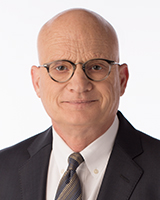Coronavirus Pandemic: UC Berkeley historian draws similarities between COVID-19 and polio epidemic of the 1950s


BERKELEY, Calif. (KGO) -- April 12 will mark the 65th year since Dr. Jonas Salk developed the polio vaccine.
It's poignant, considering what the human race is dealing with now.
If we're going to talk about history, best to begin in the present, and what strange times these are. It used to be we that we looked at masked men suspiciously.
Now, with the threat of COVID-19, it's the other way around.
If this feels like unfamiliar territory, that would be only to this generation. Smallpox killed 500 million people over hundreds of years.
In the first half of the 20th century, infectious diseases were the biggest killers. There was nothing we could do about them.
"We have been fortunate to live in a time free of the scariest pandemic diseases in human history," said Dr. Elena Conis, a medical historian at UC Berkeley.
"Look at polio. Movie theaters closed. Church services cancelled. Kids home from school. Swimming pools closed. It shut down American towns."
We saw examples of that in a documentary called "The Shot that Saved the World," about Dr. Jonas Salk and the fight for a polio cure.
"What people have to realize is that polio was the most feared disease in America," said Carl Kurlander, who produced the film. "In 1952, there were 53,000 cases."
Where we worry about having not enough ventilators now, we faced a shortage of iron lung machines then.
Polio paralyzed people, mostly children. The mechanical lungs would breathe for them.
RELATED: Coronavirus California: UCSF researchers race to find treatment for COVID-19
Then, as now, parents and relatives could not visit the crowded polio wards for fear of spread.
"In both cases, you are dealing with an unseen enemy like in a horror film. You don't know who it will attack next," said Kurlander. "They were paranoid. Then, like now, we were up against a virus that doesn't discriminate."
There were differences, too. Americans had more faith back in the 1940s and 50s. They believed in doctors, the March of Dimes and the government.
Now, we have so many pointed fingers. "Today, it feels like a red or blue strategy," said Kurlander. "Then, we felt we could all win and defeat a common enemy."
After Dr. Salk found the polio vaccine, he did not claim a patent. "It would be like patenting the sum," Salk told Edward R. Murrow. "This vaccine belongs to the people."
The people ran with it. Americans enjoyed an extended period free of fears, pretty much until AIDS came along.
RELATED: More polio cases now caused by vaccine than by wild virus
Clearly, we have just left a short-lived golden age.
Here we are, again, doing what we have done since Bubonic plague.
We're taking refuge. It's in our nature. This generation just didn't know that until it had to.
If you have a question or comment about the coronavirus crisis, submit yours via the form below or here.
Get the latest news, information and videos about the novel coronavirus pandemic here
RELATED STORIES & VIDEOS:
- Live updates about coronavirus outbreak in US, around the world
- Everything you need to know about the Bay Area's shelter-in-place order
- Stimulus calculator: How much money should you expect from coronavirus relief bill
- What Bay Area tenants need to know about rent payments, eviction amid COVID-19 outbreak
- Live updates about coronavirus outbreak in US, around the world
- Here's how shelter in place, stay at home orders can slow spread of COVID-19
- Coronavirus Timeline: Tracking major moments of COVID-19 pandemic in San Francisco Bay Area/
- Coronavirus and the new normal of living in the San Francisco-Bay Area -- COVID-19 Diaries
- Happy hour goes virtual as people try to be sociable while social distancing during COVID-19 crisis
- Coronavirus Outbreak: Here's why you should practice 'social distancing'
- DRONEVIEW7: What the Bay Area looks like during the coronavirus shelter-in-place
- ABC7's drive around San Francisco shows empty streets, businesses shuttered
- Symptoms, prevention, and how to prepare for a COVID-19 outbreak in the US
- List of stores, companies closing due to coronavirus pandemic
- Canceled late fees, free services available amid COVID-19 crisis
- Here's how you can help during COVID-19 pandemic
- How to maintain learning during school closures
- No masks but here are 100+ products that may help protect you against novel coronavirus germs
- Here's a look at some of history's worst pandemics that have killed millions
- Asian community fighting racism, xenophobia, bigotry as world fights COVID-19
CONTACT ABC7: Submit your question or comment about the coronavirus crisis here










